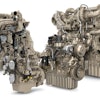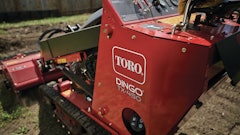
Road Dryer, LLC, has its experts on hand in Silver Lot 3 Booth #S6509 at CONEXPO-CON/AGG, March 10-14, 2020, in Las Vegas, NV. Visitors can learn how the truck- or trailer-mounted Road Dryer RD-1200XT quickly dries asphalt and concrete pavement, allowing crews to pave or apply surface treatments or striping after just one pass.
The Road Dryer, which blows heated air up to 400° F (204° C) directly downward through multiple nozzles, eliminates the risk of “flying objects,” and allows traffic to flow in nearby lanes — thus reducing congestion caused by traffic restrictions. The RD-1200XT preconditions the incoming air to remove moisture prior to heating and directing the heated air to the road, allowing faster drying time. The unit will not harm asphalt, as the flow of drying air does not exceed 400° F.
Weather is not the only cause of wet pavement. Milling processes also use water to cool grinder teeth, leaving the road surface wet and unsuitable for paving until dry. The Road Dryer can follow behind a milling machine and immediately dry the pavement for resurfacing. Because the pavement is typically ready for paving or surfacing within an hour, it allows for increased throughput by several road miles per shift.
For striping operations, hydro-blasting leaves the road surface wet, and it must be dried before new paint may be sprayed. With an RD-1200 following the hydro-blaster to dry the surface, a paint sprayer may be run immediately behind the Road Dryer unit, to paint or repaint lines.
The RD-1200 can be adjusted for drying widths of 8 to 12 ft. (2.4m to 3.7m). Because it dries pavement on demand, it provides flexibility for contractors and government agencies to meet timetables by minimizing delays from weather- and project-related wet conditions.
Road Dryer’s booth features an RD-1200XT on display for visitors to explore.














